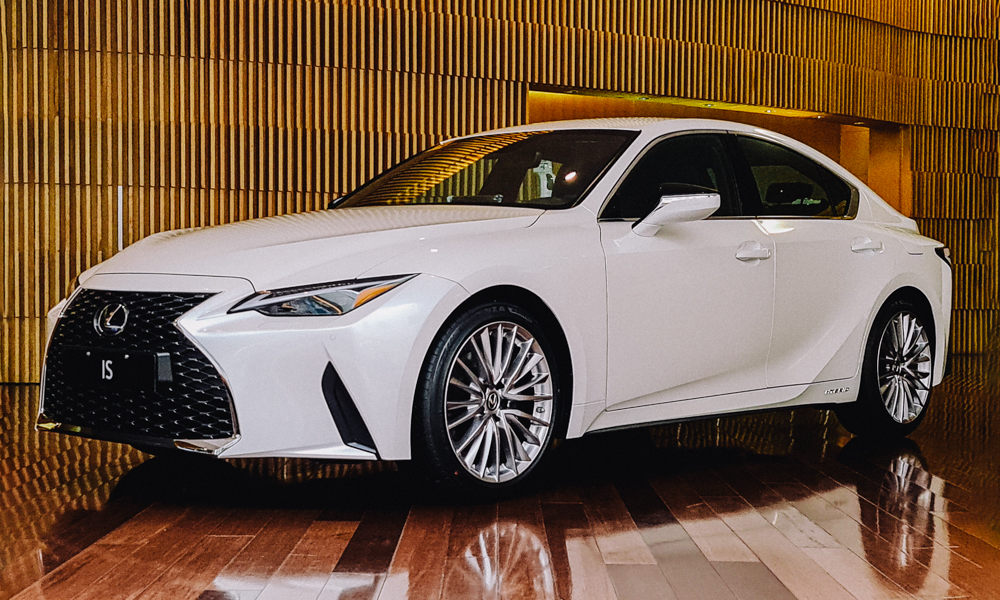
First-time luxury sedan buyers often look toward the BMW 3-Series, the Mercedes-Benz C-Class and the Audi A3. The Lexus IS usually ends up getting overlooked. But the car’s latest version aims to change all that and make a stronger statement for itself, and we’ve recently taken one for a short drive to see what separates it from the class.
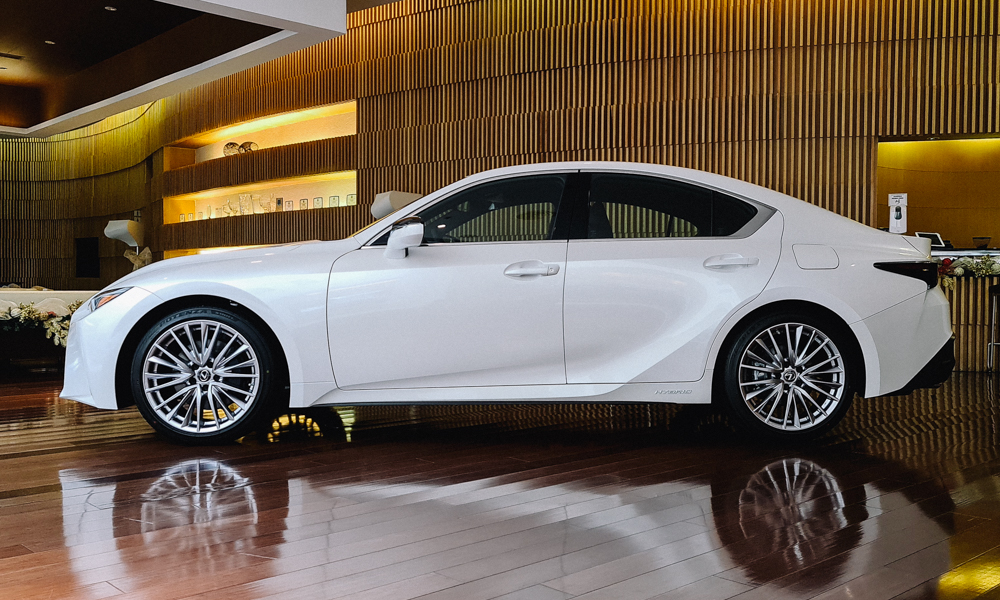
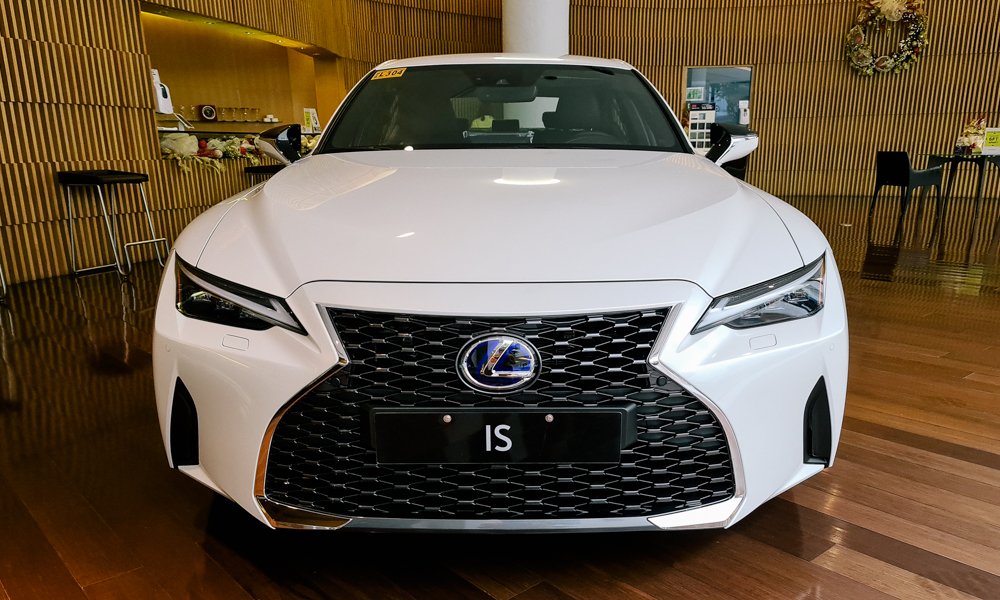
Style-wise, expect the IS to turn heads with the most dramatic iteration of the L-finesse design language. Starting with the front with the trademark spindle grille, it’s refined with a look that’s reminiscent of finely cut diamonds, surrounded by new headlamps and bold hood lines. All these add up to a front end that commands authority.
Viewing it from the side shows that the designers spared no effort in giving the car beautiful proportions. From the sharp cuts and chisels in the doors and side skirts to the muscular rear fenders, you’ll also pleasantly find the same attention to styling in the 19-inch wheels wrapped in Bridgestone low-profile tires.
The rear has the biggest (and probably the best) change, and it’s in the form of the new taillight design. Both sides are connected with a lightbar, a look that’s increasing in popularity among a lot of automakers. The trunk lid even has a subtle duck tail, which we think visually sets the IS apart from other cars on the road.
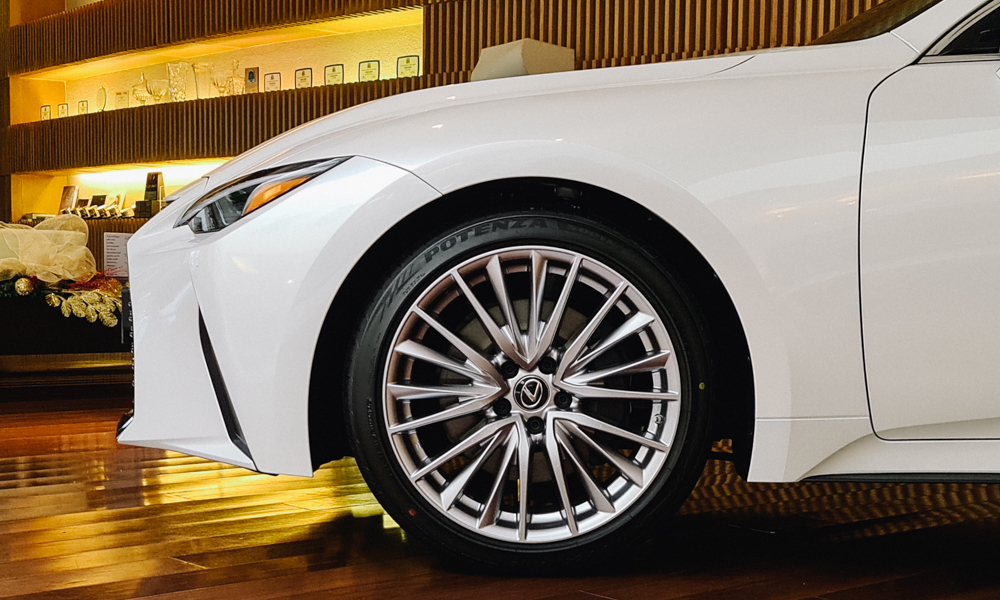
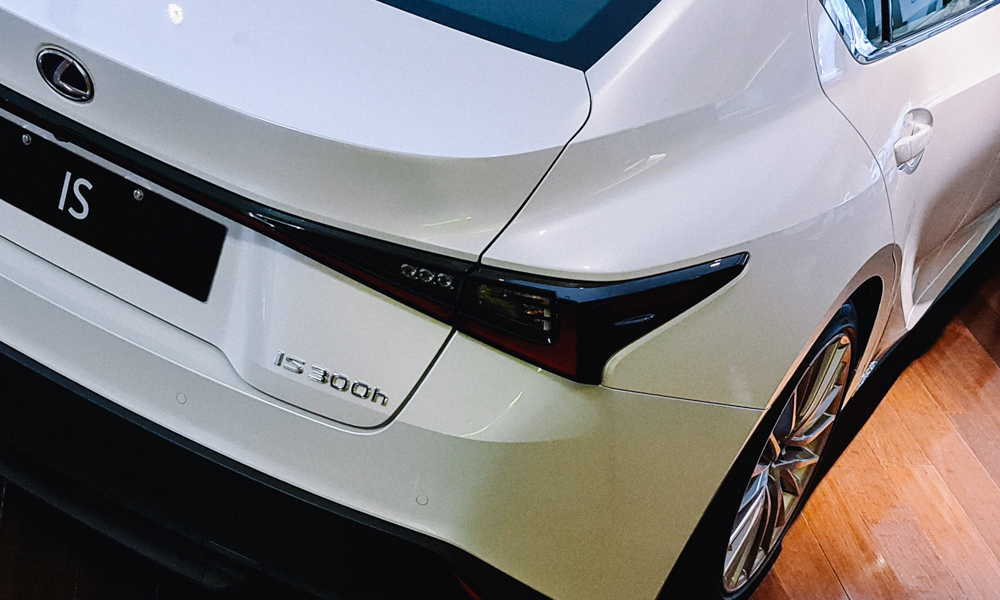
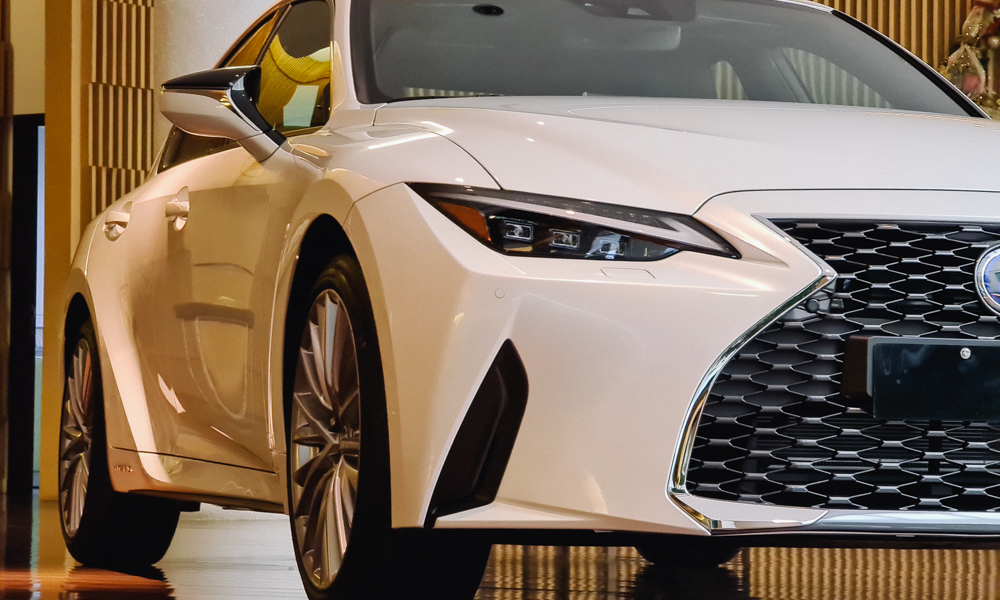
The interior still has that same excellent build quality that one expects from a Lexus. While most of the dashboard is carried over from the outgoing model, tech-savvy owners will be happy to know that the center console now houses an eight-inch touchscreen display. This can be operated by touch, or with a new touchpad which Lexus calls Remote Touch Interface, found just by the armrest. The touchpad even boasts haptic feedback. The system is responsive and easy to use, and supports Android Auto and Apple CarPlay.
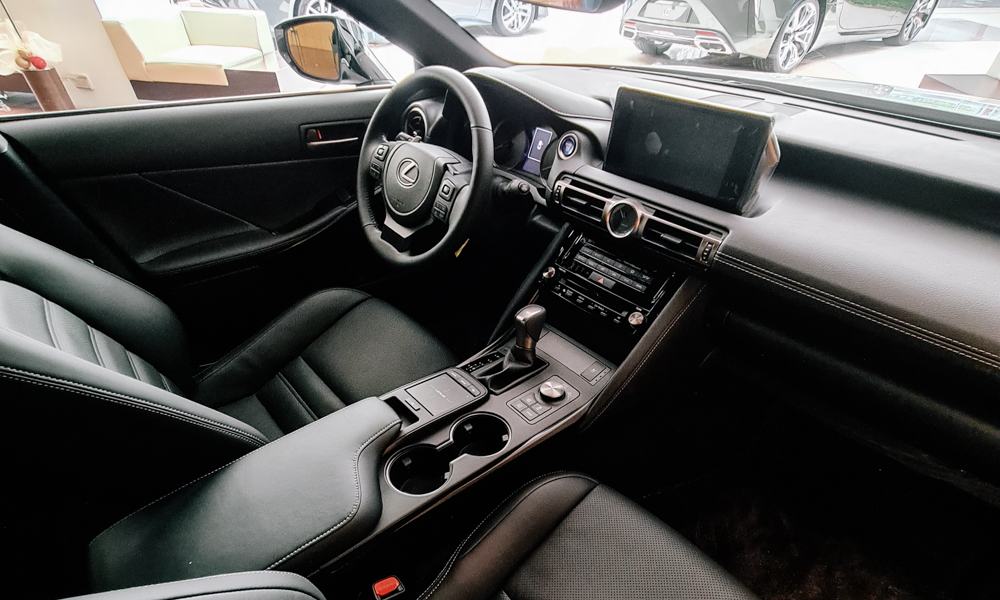
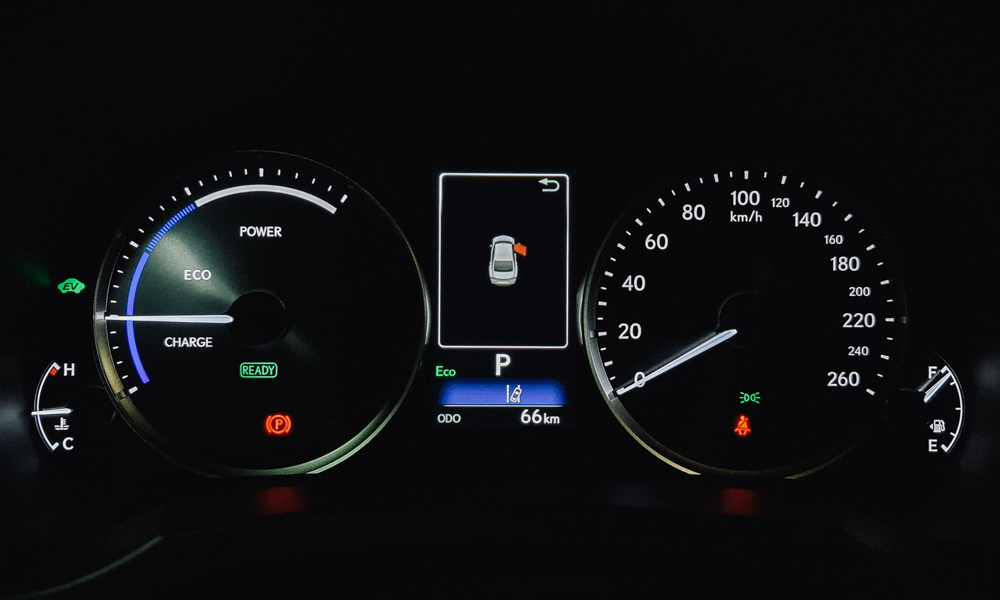
The IS300h is offered only with a 2.5-liter four-cylinder engine paired with an electric motor, producing a combined 220hp and 300Nm. Typical for Lexus (and Toyota) hybrids, there is no sound of the engine turning on and idling once you hit the start button. The car can silently run on the electric motor in areas where traffic jams are frequent, with the gasoline mill firing up depending on the battery charge, vehicle speed, and accelerator-pedal position.
If all this sounds boring, you’d be happy to know that the IS300h has a party trick called Lexus Driving Signature. We could’ve had the showroom staff tell us all about it, but we decided to let the car do the talking. First off, there is better acceleration thanks to the electric motor working in tandem with the petrol engine (as opposed to being separate units). In addition, body roll seems to be mitigated during cornering, so there are probably some changes to the suspension as well.
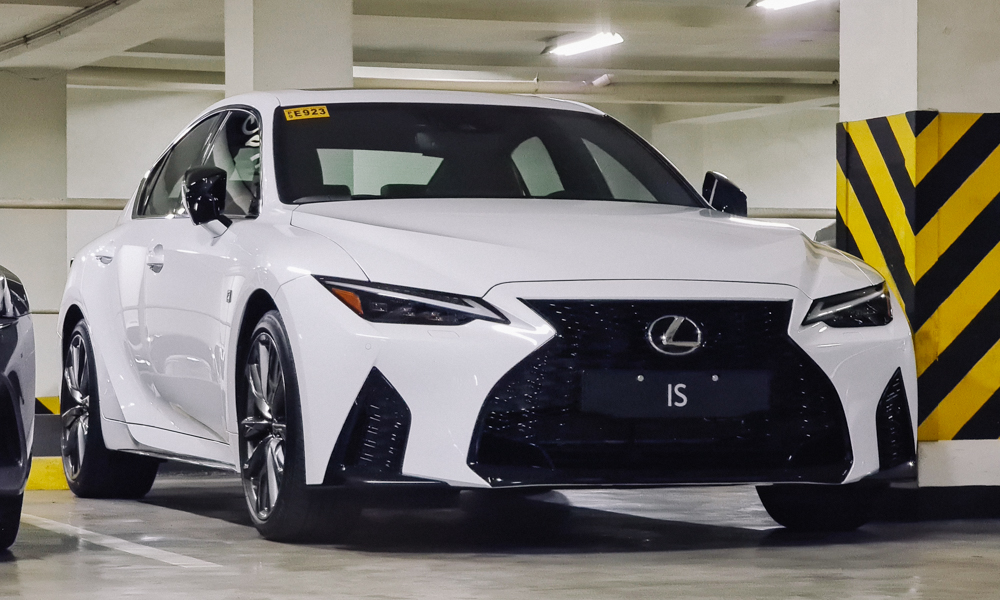
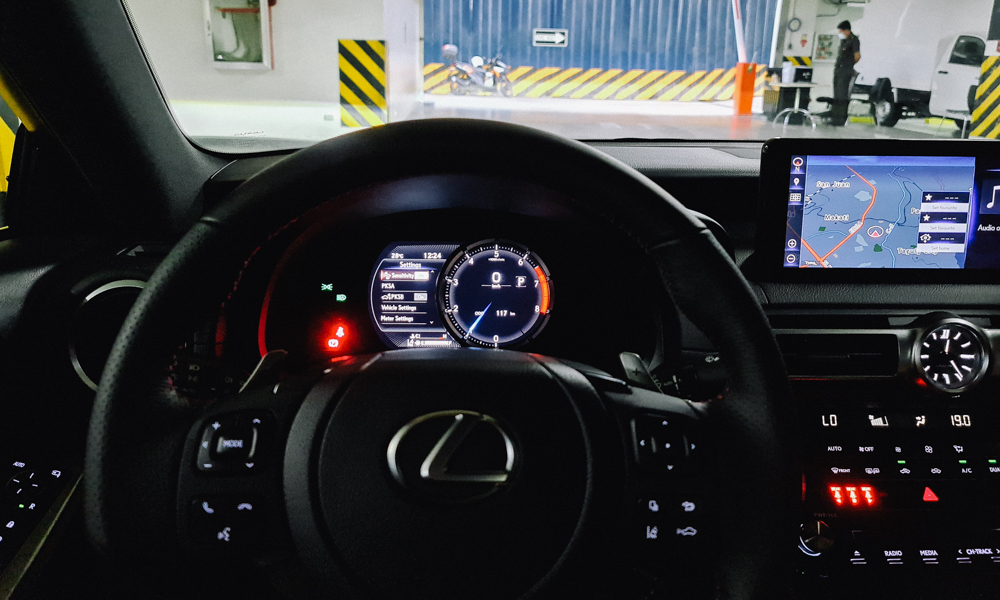
If the IS300h is too tame, there’s also the IS350 F Sport. It loses the hybrid tech but gets a significant power bump at 310hp and 380Nm from the naturally aspirated V6 engine. All the chrome bits are replaced with blacked-out trim, and the car gets some boy-racer stuff like a front splitter, a rear diffuser and a proper rear spoiler. The 19-inch wheels get a lick of gunmetal paint, and the cabin has some F Sport niceties including a motorized gauge cluster.
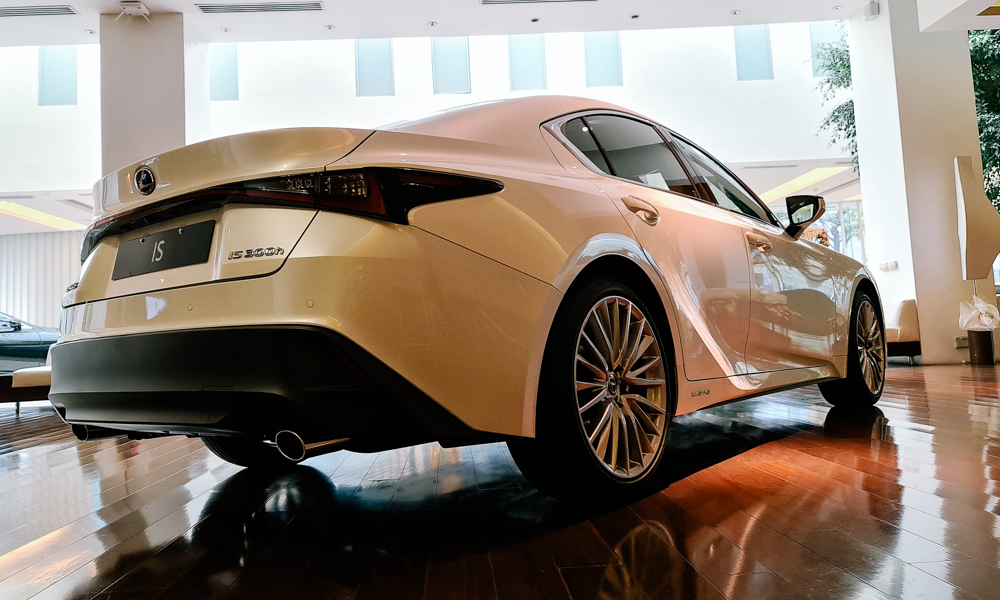
This short yet wonderful experience with the IS300h has left us with nothing but positive impressions. The redesigned exterior is one of its strengths—one that could give its European rivals some serious competition. Its ace up its sleeve is the eco-friendly powerplant, which will surely be one of its strong suits as Filipino consumers warm up to hybrid vehicles. The IS300h comes in at P3,328,000, while the IS350 F Sport is priced at P3,808,000.


0 Comments